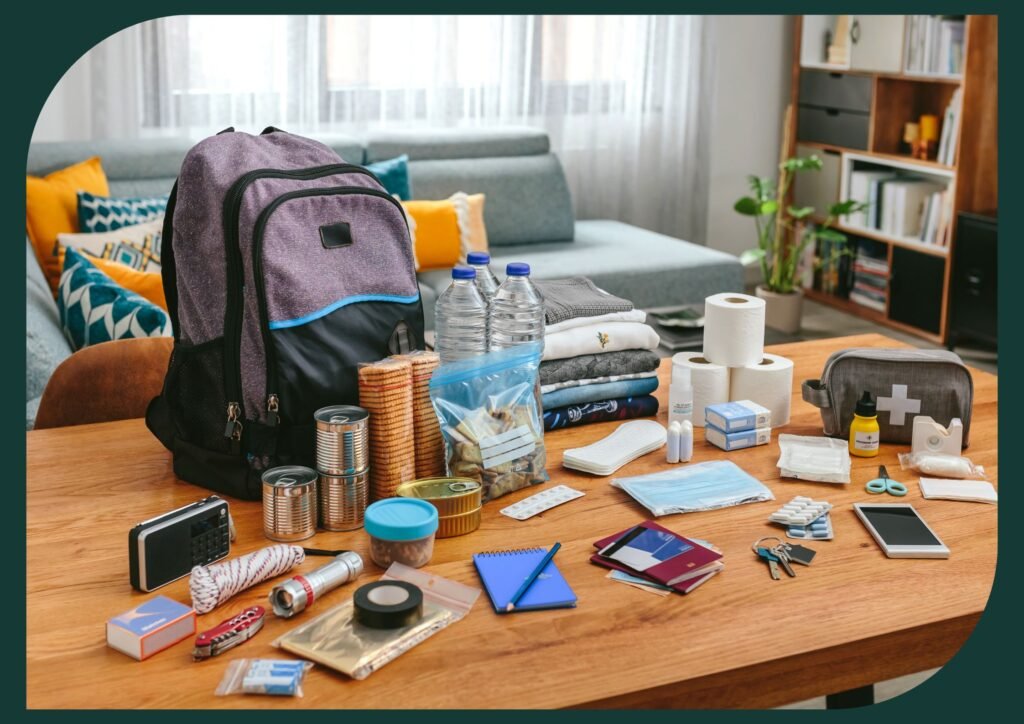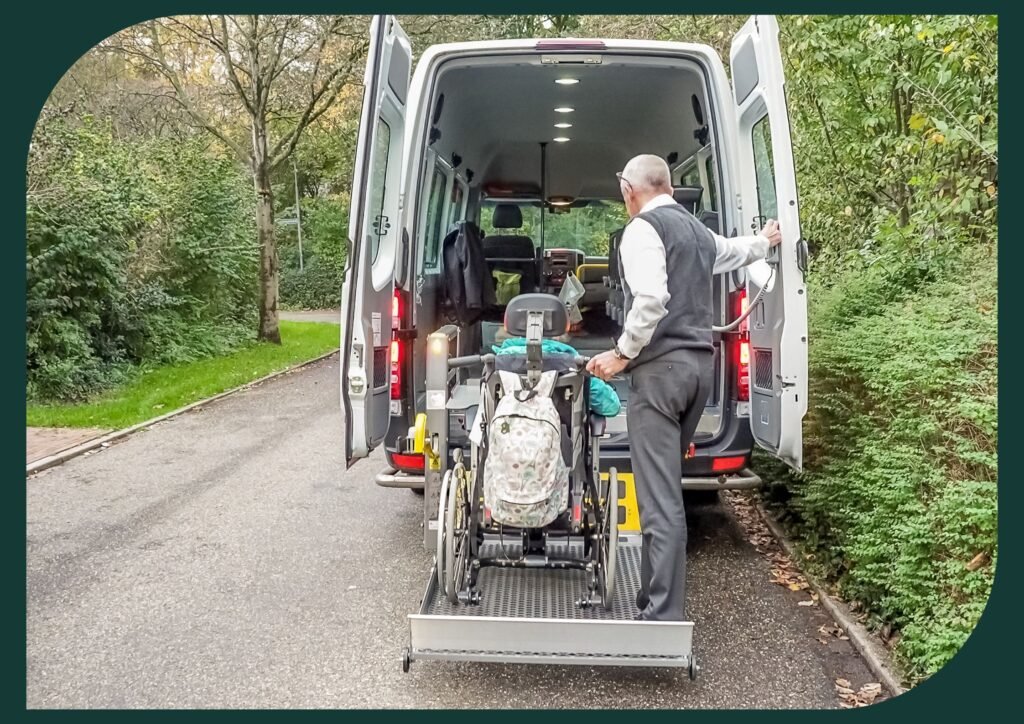Emergencies can strike at any moment, but with a solid preparedness plan in place, you can make sure you’re ready for whatever comes your way. Whether you’re looking after yourself or a loved one, this guide will help you create an emergency plan that’s tailored specifically to seniors. From essential medical supplies to evacuation tips, we’ve got everything you need to stay safe and stress-free.
Let’s dive in and make sure you’re ready—because being prepared is the first step to staying safe!
Understanding the Risks: Why Senior Emergency Preparedness Matters
Let’s face it—emergencies are unpredictable, and as we age, some of our abilities to react quickly or physically manage a crisis can change. But don’t worry! Understanding the risks is the first step toward preparing for them.
- Mobility Issues
- Seniors with mobility challenges may have difficulty evacuating during an emergency. Whether you use a walker or a wheelchair, make sure to map out evacuation routes that accommodate these needs.
- Chronic Health Conditions
- If you have a condition like diabetes or heart disease, you need to take extra steps to make sure your medications and medical supplies are on hand. You don’t want to find yourself in a tight spot without the things you need most!
- Medications and Cognitive Challenges
- If memory loss or cognitive impairments are a concern, it’s crucial to have a written plan that details which medications you take and when. You can also make copies of this plan and keep it in your emergency kit!
Pro Tip: Talk to your doctor about your specific needs and how they may impact your preparedness.
Prefer to listen than read?
Tailoring Your Emergency Plan: One Size Doesn’t Fit All
Every senior has unique needs, so your emergency plan should reflect yours! Here’s how to tailor it just for you:
- Health Considerations
- If you have any medical conditions like asthma, arthritis, or high blood pressure, make sure to include the proper medical supplies in your kit. If you rely on mobility aids, plan how to quickly access them.
- Dietary Needs
- Do you have dietary restrictions, such as low-sodium or gluten-free? You’ll need to plan your emergency food kit around your specific needs. Don’t forget about any supplements you might take!
- Cognitive Support
- For seniors with dementia or other cognitive impairments, consider a step-by-step guide to follow during an emergency. This guide should include key actions (like calling for help or following a particular route) in clear, simple language.
Reminder: Consult with your healthcare provider to ensure your plan covers all your medical needs and considerations!

Build Your Emergency Kit (aka Your Go-Bag)
A well-stocked emergency kit is your ticket to being prepared for whatever comes your way. Think of it as your “go-bag”—everything you need to survive at least 72 hours without power, access to stores, or immediate help.
What Should Be in Your Emergency Kit?
Here’s the ultimate checklist of what every senior emergency kit should include:
- Medications and Medical Supplies
- Pack at least 72 hours’ worth of prescription medications. Make sure to have a list of your medications, dosages, and any special medical instructions.
- Don’t forget spare batteries for hearing aids, extra glasses, and any other medical devices.
- Include essential medical supplies like band-aids, antiseptic wipes, and a thermometer.
- Non-Perishable Food and Water
- Choose foods that are easy to prepare and won’t spoil quickly. Think canned soups, protein bars, dried fruits, and energy snacks.
- You’ll need at least one gallon of water per person, per day. Don’t skimp on this—hydration is key!
- Personal Documents and Important Information
- Keep copies of important documents, such as IDs, insurance information, and medical records. Store these in a waterproof container to protect them from water damage.
- A list of emergency contacts, including family members, caregivers, and doctors, is also a must-have.
- First-Aid Kit
- A well-stocked first-aid kit is a lifesaver in emergencies. Include bandages, gauze, antiseptic cream, tweezers, and pain relievers.
- Tools and Equipment
- A flashlight, extra batteries, a battery-powered radio, and a multi-tool can come in handy if the power goes out. Don’t forget a manual can opener if you’re storing canned food!
- Personal Care Items
- Pack toiletries like toothbrushes, toothpaste, soap, hand sanitizer, and wet wipes. These will make life easier in the event of an extended emergency.
Once your emergency kit is complete, keep it in an easily accessible place, like a closet by the door or in a car, so you can grab it quickly when needed.

Developing Your Emergency Plan: Be Ready to Act Fast
An emergency plan is like your superhero cape—it helps you feel confident and ready to handle whatever comes your way. But let’s make sure it’s sharp and ready for action!
- Communication Plan
- What if your phone battery dies or the power goes out? That’s why you need multiple ways to contact your emergency contacts—cell phones, landlines, whistles, even walkie-talkies! Have a few backup methods in case the first one fails.
- Create a “buddy system” with a friend, neighbor, or family member. That way, if one person can’t reach you, someone else will! And don’t forget to include important phone numbers (like doctors or local authorities) in your emergency contacts, so you’re not scrambling in a crisis.
- Evacuation Routes
- Picture this—an emergency happens, and you need to get out fast. Is your evacuation route ready? Take time to map out your escape plan—and make sure it’s clear and easy to navigate. If you use a walker or wheelchair, ensure the path is free of obstacles and wide enough for easy movement.
- Practice your routes with a family member or caregiver! This helps you get comfortable and confident in your escape plan. Plus, it’s a fun activity that gives everyone a sense of preparedness.
- Community Resources
- It’s always good to know that help is just a phone call away. Do some research on local senior transportation programs, evacuation assistance, and any other community resources that are available in case of an emergency.
- Create a “Resource List” and keep it somewhere easily accessible—on the fridge, in your phone, or near your emergency kit. That way, you can grab it in seconds when you need it!
- Personal Safety Measures
- Smoke detectors and carbon monoxide detectors are life-savers—literally! But did you know that testing them regularly is key to ensuring they’ll work when you need them most? Don’t just wait for a reminder; make it a part of your routine!
- Set a monthly reminder on your phone to check your detectors. It’s a quick task that could save your life, and you’ll feel like a preparedness pro when you’re doing it.
- Stay Informed
- When an emergency strikes, knowledge is power. You can’t control when something happens, but you can control how prepared you are to handle it. Sign up for local emergency alerts to stay in the know about weather, evacuations, or other important alerts.
- Turn on notifications for local emergency apps and follow social media accounts for your city or county to get real-time updates. Being in the loop means you can stay ahead of any situation!

Stay Physically and Mentally Prepared
Emergencies aren’t just about physical safety—they can also take a toll on your mental health. Being mentally prepared is just as important as having physical supplies.
Here’s how you can stay sharp:
- Practice Calm Breathing
- Emergencies can cause stress, but practicing deep breathing techniques can help calm your nerves when it’s needed most.
- Stay Connected
- Talk to loved ones regularly about emergency plans. Having these conversations in advance reduces stress when a real emergency occurs.
- Keep Your Mind Active
- Stay mentally fit by engaging in activities like reading, puzzles, or learning something new. Mental sharpness can help you make good decisions during stressful situations.
Bonus Tip: Learn basic first-aid and CPR skills. In an emergency, knowing how to perform CPR or treat minor wounds can be life-saving.
Checklists: Keep Track of Everything!
Let’s be real: there’s no better way to stay organized than a good old checklist. It’s like a map that leads you to peace of mind! Here’s how to break it down:
- Emergency Kit Checklist:
- Medications (at least a 72-hour supply)
- First aid supplies (band-aids, antiseptics, and personal items like a spare inhaler or arthritis pain relief)
- Food and water (at least 3 days’ worth)
- Medical equipment (oxygen, walking aids, hearing aids, etc.)
- Personal documents in a waterproof container (don’t forget the important legal documents!)
- Flashlight and extra batteries (and remember the headlamp for hands-free lighting!)
- Clothing and blankets (pack extra layers to stay comfy)
Print out your checklist and keep it inside your emergency kit. Or, if you’re more of a tech lover, snap a photo of it and store it in your phone. That way, you’ve always got it on hand, no matter what!
- Communication Plan Checklist:
- Cell phone and charger
- Backup communication devices (like a whistle or walkie-talkie)
- Emergency contact list (including neighbors, friends, family, doctors, and local emergency services)
Use your phone’s contacts app to create a “Emergency” contact group. That way, when you need to reach everyone quickly, you can do it in one tap. So simple, so fast!
- Evacuation Plan Checklist:
- Clear evacuation routes that are easy to navigate
- Practice your evacuation plan with family or caregivers
- List of community resources (transportation, shelters, etc.)
Pro Tip: Practice doesn’t just make perfect; it makes you feel empowered! The more you practice your evacuation routes, the more confident you’ll feel in the event of an actual emergency.

Review and Update: Don’t Forget to Check in Regularly
Having an emergency plan and kit is fantastic, but maintaining it is the key to staying ahead of any curveballs. Here’s how to make sure your plan is always in tip-top shape:
- Check Expiration Dates
- Medications, food, water, and batteries all have expiration dates. Set a calendar reminder to check these every six months to keep everything fresh and ready to go!
- Make it a routine! Set a half-yearly “emergency prep day” on your calendar, and spend just 30 minutes checking and updating your supplies. It’s an easy way to stay on top of things without any last-minute scrambling.
- Refill Prescriptions
- Don’t wait until you’re running low on your meds! Always have at least a 72-hour supply in your emergency kit, and check the stock regularly to stay ahead.
- Ask your doctor for refills a few days before your current supply runs out. That way, you’ll never be caught off guard!
- Update Contact Information
- People change numbers, addresses, and emails. Every six months, double-check that your contact list is up-to-date so you can reach the right people in an emergency.
- Keep a digital copy of your emergency contact list in the cloud (Google Drive, iCloud, etc.). That way, it’s easy to update and always accessible, no matter where you are!
Conclusion
Being prepared isn’t just about packing an emergency kit or having a plan—it’s about feeling confident and empowered. By following these tips, you’ll be ready for anything that comes your way, and you’ll do it with a smile!
Remember, preparation is power, and with the right tools, resources, and mindset, you’ll be ready to face any challenge that comes your way. Stay safe, stay prepared, and keep having fun while you’re at it!
Disclaimer
The content provided on MySeniors.World is for informational purposes only and is not intended as either financial or medical advice. Always consult a qualified professional before making any investment or health-related decisions.
Posts may contain affiliate links, meaning we earn a commission – at no additional cost to you, if you click through and make a purchase. Your support helps us continue providing valuable content.



















